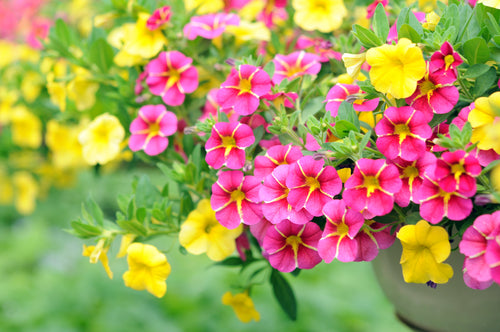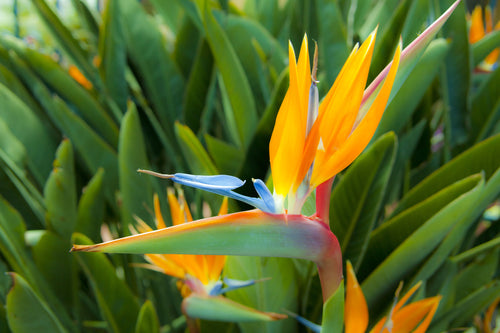Many of our customers have been have been coming into our Garden Center with tomatoes that have an ugly brown-black flat spot on the bottom of the tomatoes. This can happen to tomatoes planted in the ground but also happens frequently to tomatoes, peppers and eggplants grown in containers. It seems that certain cultivars get blossom end rot more often than others (like Roma Plum tomatoes and Early Girls to name a few). Certain growing conditions with extreme rain fall like this season contribute to Blossom End Rot.
Blossom-end rot is a serious disorder of tomato, pepper, and eggplant. Growers often are distressed to notice that a dry sunken decay has developed on the blossom end (opposite the stem) of many fruit, especially the first fruit of the season. This nonparasitic disorder can be very damaging, with losses of 50% or more in some years.
Symptoms
On tomato and eggplant, blossom-end rot usually begins as a small water-soaked area at the blossom end of the fruit. This may appear while the fruit is green or during ripening. As the lesion develops, it enlarges, becomes sunken and turns black and leathery. In severe cases, it may completely cover the lower half of the fruit, becoming flat or concave. Secondary pathogens commonly invade the lesion, often resulting in complete destruction of the infected fruit. On peppers, the affected area appears tan, and is sometimes mistaken for sunscald, which is white. Secondary molds often colonize the affected area, resulting in a dark brown or black appearance. Blossom end rot also occurs on the sides of the pepper fruit near the blossom end.
Cause
Blossom-end rot is not caused by a parasitic organism but is a physiologic disorder associated with a low concentration of calcium in the fruit. Calcium is required in relatively large concentrations for normal cell growth. When a rapidly growing fruit is deprived of necessary calcium, the tissues break down, leaving the characteristic dry, sunken lesion at the blossom end. Blossom-end rot is induced when demand for calcium exceeds supply. This may result from low calcium levels or high amounts of competitive cations (a positively charged ion) in the soil, drought stress, or excessive soil moisture fluctuations which reduce uptake and movement of calcium into the plant, or rapid, vegetative growth due
Management
- Maintain the soil pH around 6.5. Lower your soil pH with an application of sulfur in the fall when you do your garden cleanup and turn over. Add Gypsum at this time also. Top Grow Gypsum contains 21% calcium.
- Use nitrate nitrogen as the fertilizer nitrogen source. Ammoniacal nitrogen may increase blossom-end rot as excess ammonium ions reduce calcium uptake. Avoid over-fertilization as side dressings during early fruiting, especially with ammoniacal forms of nitrogen (Miracle-Gro, Miracle-Gro Potting Soils, Osmocote, etc., read the ingredients on the package). Dr. Earth Organic 5 Tomato, Vegetable and Herb fertilizer contains 7.96% calcium. Dr.Earth should be applied to the planting hole when you first set your plants in the ground, then I reapply it every 3 weeks.
- Avoid drought stress and wide fluctuations in soil moisture by using mulches and/or irrigation. Plants generally need about one inch of moisture per week from rain or irrigation for proper growth and development. This season has had totally unpredictable weather. From a cold wet April and May to a scorching hot summer with 6 inches of rain at once. We’ll all have to adjust our gardening techniques to match the season’s weather.
- Tomatoes grown in containers are prone to Blossom End Rot. Uptake of the plant’s necessary calcium in containers can be difficult. Bonide’s Rot Stop corrects calcium deficiencies and controls blossom end rot on tomatoes and other vegetables. Apply to developing fruit and foliage after periods of heavy rain or rapid growth. Thoroughly spray the entire plant with rot stop on a cool dry day (below 80°). Avoid potting soils and fertilizers that contain ammoniacal nitrogen. Dr. Earth Organic Potting Soil and Organic 5 Tomato, Vegetable and Herb Fertilizer is the perfect mix for growing veggies in containers, it works especially well when used in Earth Boxes. Dr. Earth Potting Soil contains ProBiotic® technology loaded with beneficial soil microbes and mycorrhizae that is proven to be effective.
Information on Symptoms and Causes from: Ohio State University Plant Pathology
Written by: Sally A. Miller, Randall C. Rowe, Richard M. Riedel
To remedy and prevent, view these products' websites:










